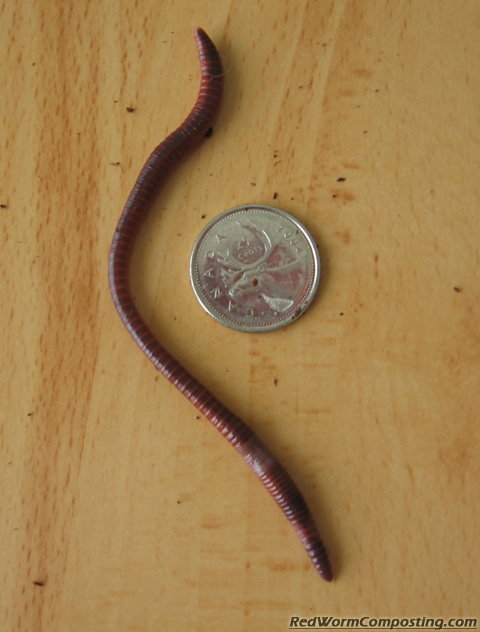Red Wigglers 101: Every Little Thing You Required to Know for Thriving Gardens
Red wigglers, or Eisenia fetida, play an important duty in sustainable gardening techniques, serving as reliable decomposers that transform organic waste right into beneficial vermicompost. Comprehending their habitat, nutritional preferences, and the myriad benefits they supply can transform your gardening technique.
Understanding Red Wigglers

Red wigglers thrive in environments rich in natural product and moisture. Red Wiggler Express. They possess a special gastrointestinal system that permits them to refine food scraps swiftly, eliminating spreadings that are packed with necessary nutrients such as nitrogen, phosphorus, and potassium. These spreadings improve soil framework, boost water retention, and foster beneficial microbial activity, all of which add to durable plant wellness
Furthermore, red wigglers can make it through in varied problems, making them versatile to numerous gardening practices, including interior and outside composting systems. Their capacity to eat large quantities of organic waste everyday settings them as useful allies for both home garden enthusiasts and commercial growers. By incorporating red wigglers into gardening efforts, one can substantially boost dirt fertility and support lasting horticulture techniques.
Perfect Environment for Red Wigglers
Developing an optimal environment for red wigglers is vital for maximizing their composting capabilities and overall wellness. Red wigglers thrive in wet, dark, and well-aerated environments, which carefully resemble their all-natural atmospheres in ground cover and decaying raw material. An appropriate habitat ought to offer a temperature range in between 55 ° F and 77 ° F(13 ° C to 25 ° C), as severe temperatures can stress or damage the worms.
The bedding material, such as shredded newspaper, cardboard, or coconut coir, should be kept moist yet not excessively wet, as excessive dampness can result in anaerobic problems detrimental to worm health. In addition, a pH degree between 6.0 and 7.5 is excellent, making certain a well balanced environment.
Correct oygenation is equally essential; it enables oxygen blood circulation and stops the buildup of harmful gases. A container or container created for vermicomposting should have water drainage holes to eliminate excess wetness and promote air movement. Regular surveillance of these conditions is important for keeping a prospering red wiggler population, inevitably improving their efficiency in damaging down organic waste and improving garden dirt.
Dietary Needs and Preferences

Red wigglers display certain choices; they are especially keen on softer, breaking down materials over harder or more coarse materials. It is necessary to prevent feeding them citrus peels, onion, and garlic in big amounts, as these can be unsafe. Additionally, meat, dairy, and oily foods ought to be excluded, as they can attract insects and create unpleasant odors.
(Lake Rhodhiss Bait)Eco-friendly products, such as veggie scraps, provide nitrogen, while brown materials, like cardboard and dried leaves, supply carbon. By providing to their nutritional demands, garden enthusiasts can cultivate a thriving population of red wigglers in their compost systems.
Benefits of Using Red Wigglers
The impressive advantages of utilizing red wigglers in gardening extend much past their function in composting. These versatile organisms add significantly to dirt health and wellness, improving nutrient availability and advertising microbial task. By freshening the soil as they tunnel, red wigglers boost water drainage and root penetration, creating an optimum atmosphere for plant growth.
Additionally, red wigglers are efficient recyclers of organic waste, transforming it into nutrient-rich castings that act as an exceptional natural plant food. These castings contain valuable microbes and vital nutrients, such as nitrogen, phosphorus, and potassium, which are vital for plant growth. The slow launch of nutrients from worm castings makes certain a consistent supply, reducing the threat of nutrient leaching and promoting lasting gardening methods.
Utilizing red wigglers fosters a more lasting gardening strategy by decreasing reliance on chemical plant foods and advertising a closed-loop system, where waste is changed right into beneficial sources. Overall, incorporating red wigglers into gardening practices provides a wide variety of environmental and farming benefits.
(Red Wiggler Express)
Composting With Red Wigglers

To start an effective vermicomposting system, choose an appropriate container with appropriate air flow and water drainage. The ideal environment for red wigglers includes a moist, dark setting with temperatures between 55 ° F and 77 ° F. Begin by layering shredded paper, cardboard, and food scraps, making sure a balanced mix of carbon and nitrogen-rich materials.
Red wigglers prosper on veggie peels, fruit scraps, coffee grounds, and eggshells, while preventing meat, dairy products, and oily foods that can draw in bugs. Consistently monitor moisture levels; the bedding click here for info should be damp but not soggy. Harvest worm castings every couple of months by dividing the worms from the garden compost, which can after that be utilized straight in yards or kept for later usage.
Carrying out vermicomposting not only minimizes garbage dump waste however likewise enriches garden soil, promoting healthy plant development and sustainable horticulture methods. Welcome this environment-friendly technique to improve your gardening undertakings.
Verdict
In recap, red wigglers are important microorganisms for enhancing yard productivity with efficient composting. By using red wigglers, gardeners can substantially improve dirt quality and nutrient accessibility, fostering healthier plant development.